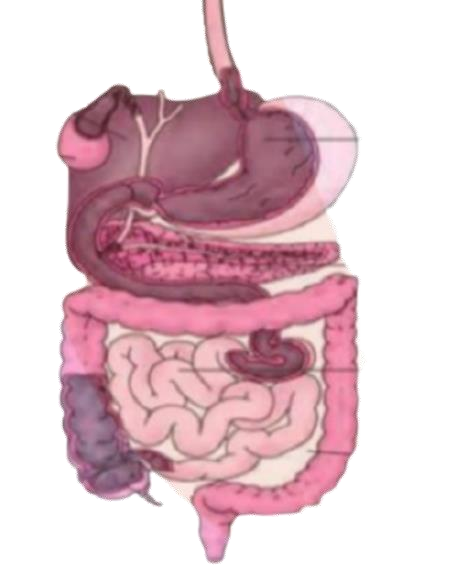Science Class 7 Chapter 2 Questions and Answers - Free PDF Download
FAQs on NCERT Solutions For Class 7 Science Chapter 2 Nutrition In Animals - 2025-26
1. What are the main topics covered in the NCERT Solutions for Class 7 Science Chapter 2 Nutrition in Animals?
The NCERT Solutions for Class 7 Science Chapter 2 Nutrition in Animals include stepwise answers covering the modes of nutrition in animals, human digestive system, digestion in different animals, absorption, assimilation and egestion, the function of digestive organs, and practical examples aligned with the CBSE 2025–26 syllabus.
2. How does the NCERT Solutions for Class 7 Science Chapter 2 explain the process of digestion in humans?
The chapter details each stage of human digestion:
- Ingestion: Taking food into the mouth.
- Digestion: Breaking down food mechanically and chemically.
- Absorption: Nutrients entering the bloodstream, mainly in the small intestine.
- Assimilation: Distribution and use of nutrients by body cells.
- Egestion: Expelling undigested waste through the anus.
3. Which digestive organs are discussed in the solutions for Class 7 Science Chapter 2, and what is their function?
The chapter covers the buccal cavity (chewing and mixing food with saliva), oesophagus (moving food by peristalsis), stomach (initial protein digestion, acid release), small intestine (complete nutrient digestion and absorption), large intestine (water absorption), liver and gallbladder (bile production and storage), and rectum/anus (waste expulsion).
4. What is the role of bile in digestion according to NCERT Solutions for Class 7 Science Chapter 2?
Bile is produced by the liver and temporarily stored in the gallbladder. It helps in the digestion of fats by breaking them into smaller droplets, making it easier for enzymes to further digest them in the small intestine. Bile does not directly digest fats but emulsifies them for effective enzymatic action.
5. According to NCERT Class 7 Science Chapter 2, why can ruminants digest cellulose but humans cannot?
Ruminants have a specialized stomach chamber called the rumen which harbors bacteria capable of breaking down cellulose. Humans do not possess the necessary bacteria or digestive structures, so cellulose passes undigested through the human digestive system.
6. What is animal nutrition as described in Class 7 Science NCERT Solutions?
Animal nutrition involves how animals obtain, break down, and use food for growth, repair, energy, and survival. The chapter discusses different ways of taking food, the role of digestive enzymes, and the distinction between absorption and egestion, as per CBSE 2025–26.
7. What is the importance of villi in the small intestine according to the Class 7 Science Chapter 2 Solutions?
Villi are tiny, finger-like projections lining the small intestine. Their primary function is to increase the surface area for maximum absorption of digested nutrients into the bloodstream, which is essential for efficient nutrient utilization by the body.
8. How do NCERT Solutions for Class 7 Science Chapter 2 differentiate between nutrition in amoeba and humans?
The solutions explain that amoeba engulfs its food using pseudopodia and digests it in food vacuoles, whereas humans have a complex digestive system with multiple organs, each specialized for different digestion stages. Both require food for cellular functions, but the process and anatomy differ significantly.
9. Why does glucose provide instant energy as explained in the NCERT Solutions for Class 7 Science Chapter 2?
Glucose is a simple carbohydrate that is easily and quickly absorbed into the blood. Its rapid oxidation releases energy instantly, which is why it is often administered to individuals needing quick energy boosts, such as in fatigue or illness.
10. What steps should be followed to answer CBSE NCERT textbook questions for Class 7 Science Chapter 2 effectively?
To answer effectively:
- Read the NCERT question carefully.
- Identify the specific concept (e.g., organ function, process step).
- Use stepwise logical reasoning as taught in solutions.
- Draw diagrams if required.
- Review CBSE marking guidelines and highlight keywords.
11. What are some common misconceptions about animal nutrition addressed in Class 7 Science NCERT Solutions?
Common misconceptions include:
- Digestion of starch starts in the stomach (it actually starts in the mouth).
- Bile directly digests fat (it only emulsifies, does not digest chemically).
- All animals have similar digestion (in reality, ruminants, humans, amoeba differ significantly in mechanisms).
12. What FUQ-style question can help students deepen understanding of digestion in grass-eating animals as per NCERT Class 7 Chapter 2?
A deep understanding question: How is the process of digestion in ruminants an adaptation to their diet, and what might happen if humans tried to survive on grass alone?.
Ruminants have a rumen for fermenting cellulose with bacteria, allowing them to obtain nutrients from grass. Humans lack this adaptation; digesting high-cellulose diets can result in poor nutrition and digestive discomfort.
13. How does the NCERT Solution for Class 7 Science Chapter 2 support CBSE exam preparation?
The solutions provide stepwise, accurate answers aligning with CBSE exam patterns, cover all key concepts from the official syllabus, offer diagram practice, and cover likely exam questions to boost performance in 2025–26 board exams.


























